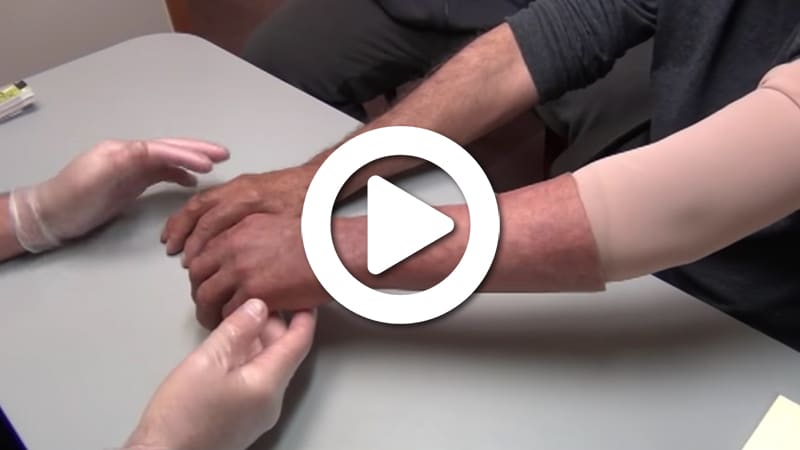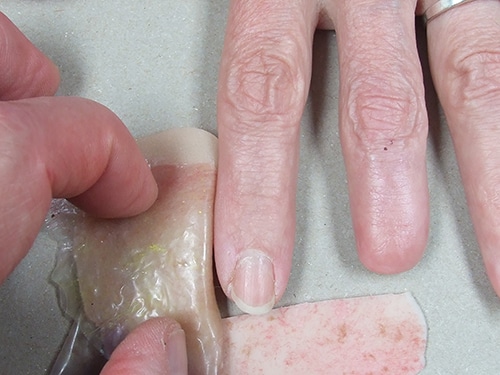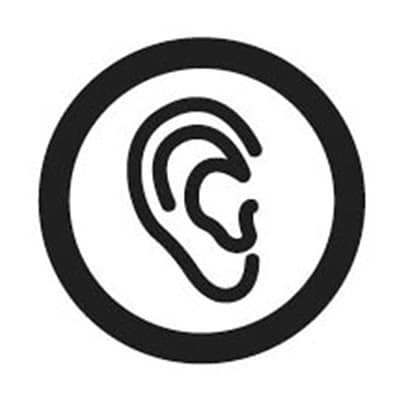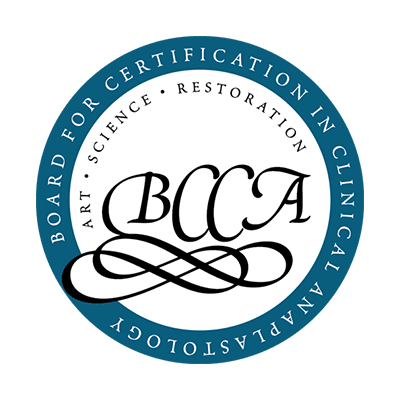We produce natural and life like finger prosthetics and hand prosthetics for patients all across the world.
We are closer so you can now receive a:
- prosthetic fingertip
- full-length finger prosthesis
- thumb prosthesis
- partial hand prosthesis
- hand prosthetic with articulating fingers
- passive silicone below-elbow restoration
Its easier than ever. Medical Art Prosthetics gives you the choice of working with our anaplastologists in more major cities than ever. If you need a fingertip prosthesis or partial prosthetic these can be done in just 2 or 3 days. Others may need just a few more days or fitting sessions.
We understand that how your hand looks is very important to you. We also understand that you want your finger prosthetics to flex again so you have more natural function restored. We will patiently discuss all options with you that promise your greatest success and satisfaction. These may include:
- Lifelike silicone fingertip prosthesis
- Complete adhesive retained thumb prosthesis
- Partial suction-fit finger/thumb prosthesis
- Multiple finger prosthetics with ring or silicone suspension
- Partial hand restoration prosthesis – “fits like a glove”
- Articulating/ratcheting finger systems (Point Designs)
- Body-Driven finger prosthetics (Naked Prosthetics)
- Livingskin Prosthetics (Ossur)
When Quality Matters
Silicone fingertip prosthetics and custom silicone aesthetic hand restorations are sophisticated prosthetic devices. When you come to us your prosthesis is provided by an experienced practitioner dedicated to clinical anaplastology and extremity prosthetics. Our anaplastologists are both artists and health care clinicians. You receive the best possible finger prosthesis as we employ:
- durable silicones
- digital technology when needed
- aesthetics and cosmesis techniques
- a caring anaplastologist and prosthetist chosen for you!
Finger and Hand Functional Likelike Prosthetics
We want you to regain as much function in your thumb, finger, and hand as possible, now! Our prosthetist is here as part of a network of your available anaplastologists. Our clinical goals are comprehensive:
- Restore thumb “opposition” with thumb prosthesis.
- Restore the musculoskeletal potential of your thumb to pinch against the other fingers.
- Grasp objects more confidently and comfortably.
With your thumb prosthesis and/or your fingertip prostheses securely attached you can pick up objects such as papers, pencils, cups, cans, balls, and other items. We patiently hear your concerns and identify your activities of daily living (ADLs) to maximize all aspects of your rehabilitation which may include:
- Your Occupation.
- Playing guitar or piano.
- Typing and keyboarding
- Performing Arts and Public relations
- Forming new relationships confidently
Comprehensive Finger and Hand Prosthetics
Options to Attach Your Prosthesis
To provide you with the best possible prosthetic finger, thumb, or hand Medical Art Prosthetics practitioners employ:
- knowledge of hand anatomy
- understanding of volume fluctuations
- effective retention strategies
- understanding of skin coloration dynamics
- digital technologies when needed
- silicone selection for durability and realism
- conscientiousness and caring
Responsible delivery of hand prosthetics and extremity silicone restoration has a clinical component, a technical and artistic component, and a best practices component. We prioritize and balance these to create your custom care plan and maximize your prosthetic outcome .
Our finger and hand prosthesis patients enjoy the advantage of knowing more talented anaplastologists will be accessible in more locations for years of reliable follow-up service.

Like videos? See more from MAP here
Our Prosthesis Process
With silicone hand restoration there is no magic involved, just highly focused work work we enjoy so our patient can relax! We literally work hand-in-hand with our clients from assessment through careful capture of every possible detail to the final evaluation of the fit and final result of the prosthesis.
The process usually involves direct impressions to record the areas involved, fitting of test sockets to assure a perfect fit, preparing detailed models, formulating colors and finally delivery of the prosthesis with training and instructions. Our mold fabrication and silicone processing steps occur between your visits.
Our balance of prosthetics credentials, experience with silicone restoration and over 3 decades of documented successful outcomes are second to none in the United States. I invite you to learn more about Medical Art Prosthetics today.








Very happy! People don’t know I have a prosthesis unless I tell them. Greg, you’re an artist!














